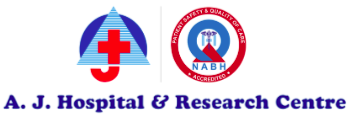
What are the basic life-saving skills that everyone should know?
The nature of unfortunate events is that they can come unannounced and unwarned. It could be a friend getting a heart attack on a plane, a stranger rammed by a vehicle or a family member getting a seizure in the middle of the night. A dire medical emergency may turn a perfectly calm moment into complete pandemonium. Therefore, familiarizing yourself with life-saving techniques can be critical in saving someone's life. Below are some life techniques that can add precious time to a person's life before the arrival of medical help or admission to the nearest hospital.
- Cardiopulmonary resuscitation (CPR)
During a cardiac arrest, the heart stops pumping, and the blood supply to the brain and rest of the body stops. When this occurs, the brain starts to deteriorate within minutes and the chances of death increase exponentially. A quick CPR can help in such situations. In this procedure, a person performs chest compressions on the patient to manually pump the blood and oxygen to the brain and the body.

It helps in keeping the patient alive until help arrives. CPR is known to double or triple the chances of survival in case of a sudden cardiac arrest. Getting more people trained in this emergency life-saving procedure can significantly bring down the number of deaths due to sudden cardiac arrest or heart attack.
- Recognizing signs of strokes
Being familiar with the symptoms of heart attack/cardiac arrest can save a valuable life as it will help in initiating a timely treatment. While chest pain is an obvious indication of an attack, look out for other symptoms like burning sensation, feeling sick, sweatiness, light-headedness or shortness of breath.

The pain and heaviness of the chest may also spread to the arms, neck, jaw, back or stomach. If you notice these symptoms, perform CPR and contact the nearest cardiology hospital or a heart specialist hospital.
- AED and how it helps save lives
A cardiac arrest is very different from a heart attack. Unlike a heart attack, the heart completely stops during a cardiac arrest. While CPR can artificially pump blood and oxygen, it cannot restart the heart. To do this, you will need an automated external defibrillator (AED).

AED is a sophisticated medical device that analyzes the heart's rhythm and delivers an electrical shock, or defibrillation, to restart it. Although using this machine is easy, professional training is recommended.
- Heimlich manoeuvre
The Heimlich manoeuvre is a technique that can remove the foreign object stuck in a choking patient's airway. This technique is easy to perform. Stand behind the patient and deliver five blows to their back with the heel of your hand. If that doesn't work, then place your fist between the bottom of their ribcage and their navel. Perform five thrusts whilst pulling back and upward on their body.

- Severe allergic reactions, preventing death by anaphylaxis
Severe allergic reactions can cause the failure of cardiovascular and respiratory systems, which may lead to death. If you see someone with an allergic reaction, look for signs like breathing difficulty, skin colour change, itching and vomiting. If the allergy is severe, immediately call for medical help and be prepared for CPR if necessary.

- Respond to someone experiencing a seizure
A sudden electrical disturbance in the brain leads to a seizure. During a seizure, there is a chance that the patient might vomit and accidentally inhale it into the windpipe. Turn them on the side so that the chances of inhaling this foreign is reduced. Place a soft object, like a pillow, under their head. Call the emergency services or a doctor immediately to prevent further mishaps.
- Familiarizing yourself with basic first aid
Basic first aid methods like bandaging can prevent infections caused by cuts, scrapes, burns etc. Fatal complications like sepsis can be avoided with the timely treatment of these wounds. Always contact a doctor immediately and then perform necessary first aid.

Learning basic life-saving skills can avoid unfortunate fatalities and save precious lives. Awareness campaigns can help spread its importance in the minds of the general population.
